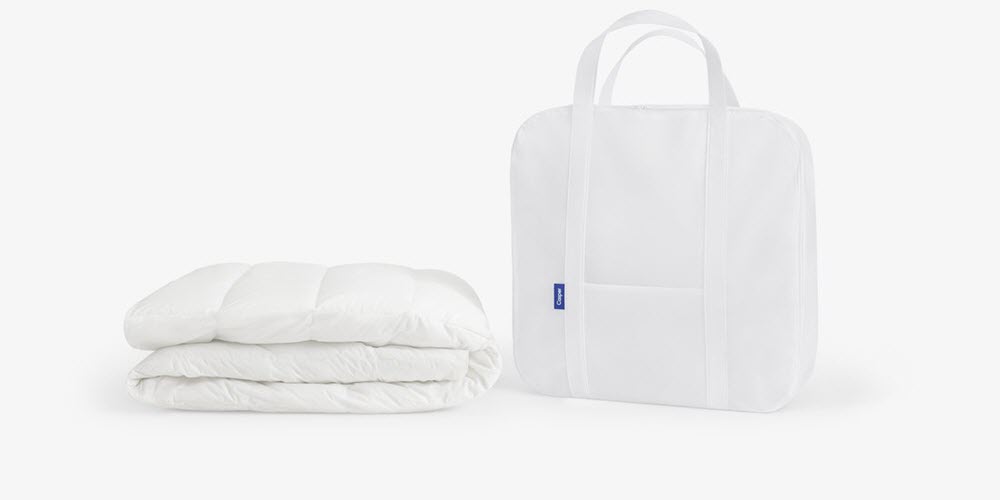
There are few constants in the life of a parent. Sleep schedules are not one of them. The sun will set. The sun will rise. Children will sleep at some point, which may or may not correspond with the movement of that celestial body.
Sleep is a fleeting, precious thing that happens when we dive for the pillow and try to force ourselves into REM sleep before something happens to shake us free of it. So you can scoff when I say I have opinions about things like mattresses and sheets.
But I do. Big ones.
I recently got a new duvet cover to replace the one that our 18-year-old kitty had decided was the only good place in the house for hairballs. Fun fact? I’ve only ever purchased bed sets with comforters and had no idea that the market for duvet inserts was so… complex. It’s the perfect example of an industry where intentional obfuscation has been employed to make choosing between similar basic items practically impossible. Once I got the duvet cover home, I found myself poring over page after page of nearly identical looking white duvet inserts that ranged anywhere from $30 to $500 (or more). They were filled with foam or feathers (or a mix… or foam that was like feathers), employed goose down or duck down, sported high thread count or low thread count, had high fill or low fill.
In the end, I closed my eyes and clicked “Buy It Now” on the next-to-cheapest option. What I ended up with was… fine. But after a couple of nights, it became apparent that I’d chosen poorly. The insert didn’t fill out the cover at all; whenever we shifted in bed, it made a plastic-y crinkling sound, and it was hot, like, “my insides are roasting” hot.
So it was back to Google where I found out that all those myriad options actually made a difference. There were winter weight and all-season weight (that’s where those fill numbers came in). Synthetic fills were cheaper, but the more expensive down-filled inserts didn’t keep heat trapped against your body while you slept (which, in Florida, is an important thing). And if I wanted something to actually fill my duvet cover, I needed to choose an oversized insert, not just a queen-sized. But that still didn’t alleviate the fact that, no matter what site I went to, I was assailed with hundreds of practically identical options, all sold under random, meaningless brand names.
What I should have done, before I went anywhere else, was go to Casper. Since I wrote about them last year, Casper has added premium duvet inserts to their lineup that tick all the right boxes. Oversized? Check. Down filled? Check. Loops on the corners to secure it to the cover? Check!
The insert is nice and breathable and the 600 fill power means that it’s suitable for use all year long. It’s made out of super-soft cotton that’s quite a few steps above the crinkly bargain-basement insert I got off of Amazon. It’s also divided into long rectangular chambers that help keep the duck down in place so that you don’t end up with all of your insert’s stuffing down at the bottom of the bed.
With a starting price of $250 for a Twin-sized insert, the Casper Duvet Insert is definitely on the higher end of the spectrum. But unlike other inserts, this carries the same 100 Night Trial as all of Casper’s sleep products. So if it ends up being too hot or not big enough or just not for you, you can send it back, no questions asked. If you’re in the market for an insert, save yourself some time and a lot of needless headaches and head over to Casper.com to pick one up. You’re not going to find a better product with a better warranty.
Disclaimer: Casper provided samples for this review. Opinions are my own.




